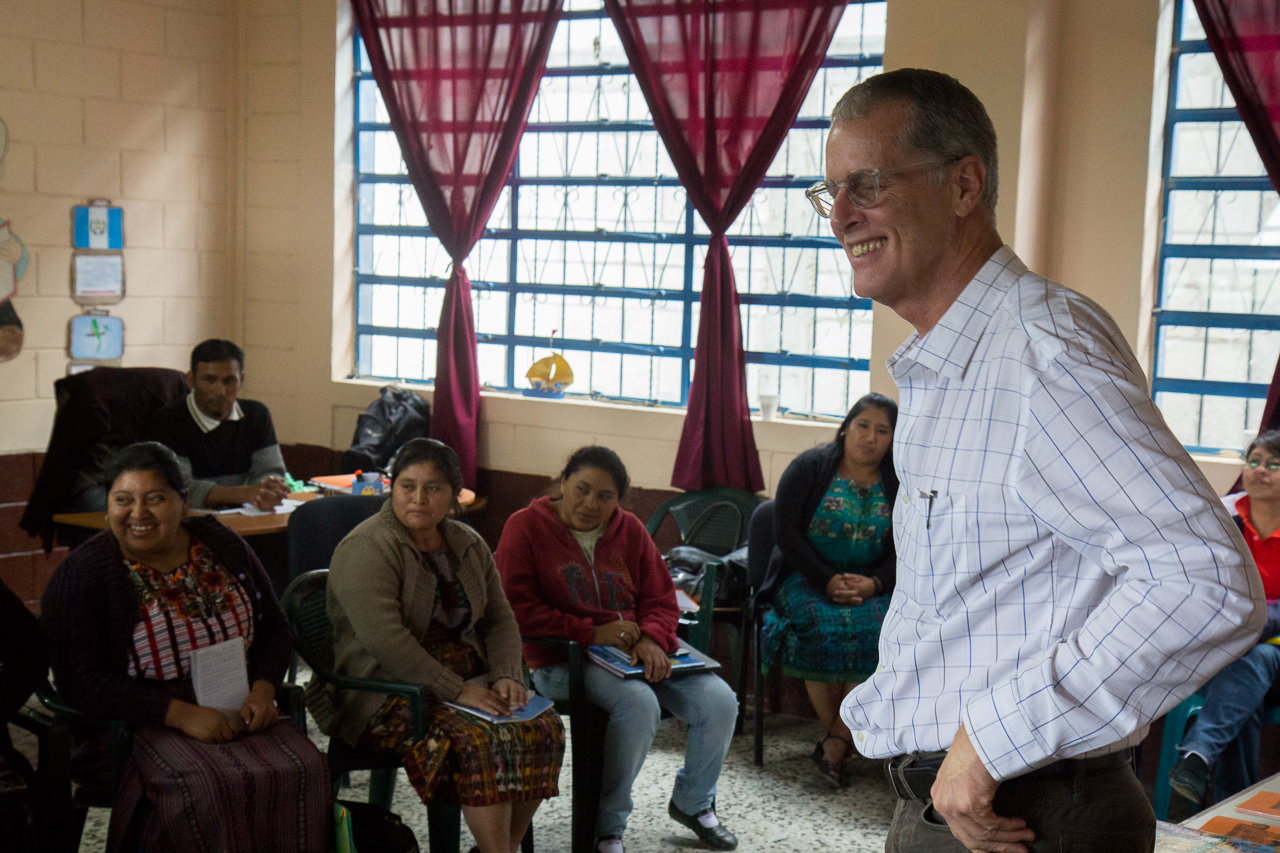
When Edwin Yaxón, District Supervisor of the San Antonio Palopo district, sat down to talk with members of the Child Aid board of directors in early 2013, he had many positive things to say about the Reading for Life literacy program. Before becoming a school principal and later District Supervisor, Yaxón had participated in Child Aid trainings as a teacher at the Agua Escondida school and had seen, first-hand, the effectiveness of the program in preparing teachers and improving students’ reading skills.
But there was one comment that Yaxón made during the meeting that particularly stuck out for Child Aid CEO Nancy Press.
At the time, Child Aid was working with four of the district’s thirteen primary schools. When asked how Child Aid could help him build on these successes, Yaxón quickly responded that he would like to see Reading for Life in all of the primary schools in his district.
“It was first time that we had had an invitation from a District Supervisor to work with an entire district,” says Press. “It really got us thinking about what the advantages and opportunities would be to work at the district level rather than on a school-by-school basis.”
Yaxón’s comment spurred additional conversations and planning that have culminated in a “district-wide” initiative to bring Reading for Life to all of San Antonio Palopo’s schools.

For the 2014 school year, which began in January, Child Aid is working in nine new schools in the district and continuing programs in four others. To accommodate this growth and meet the new demands, we have added to our literacy training staff. The Child Aid team is also working with a committee of education leaders from the district to develop a series of training workshops for the district’s principals to be held throughout the year. The objective of the workshops will be to help principals sustain the literacy program when Child Aid leaves and to effectively manage the continued professional development of their teachers.
Country Director John van Keppel says this new partnership with the San Antonio Palopo district is an opportunity for his team to work at the district level to facilitate greater communication and cooperation between teachers, principals and schools.
“We have become very good at working at the classroom level, engaging teachers and helping them become more effective at promoting reading, writing and learning skills.” says van Keppel. “But we haven’t focused as much outside of the classroom – with the school principals, district supervisors, parents and the broader community. With this district-wide partnership, we have the opportunity work directly with the principals and district supervisor and to learn what it takes to integrate them in the program and engage them in our efforts to improve education in their schools.”
The Child Aid team has met with Yaxón and the San Antonio Palopo principals several times in the lead-up the new school year, introducing them to the program and soliciting their feedback and advice on how best to implement it in their schools. That process will continue with the workshops, which van Keppel expects to be very interactive and participatory.
“It has been important for us to include the school directors from the very beginning,” says van Keppel. “This is partly because we know that if they participate in the implementation of the program they will feel a sense of ownership and want it to be successful. But also, their involvement will ensure the long-term sustainability of the program in their schools, which is one of our primary goals.”
“We are going to learn a tremendous amount from this process,” adds Press, “which will inform our work in other schools and districts. I’m hopeful that it will generate more communication between teachers, principals and schools and that this initiative will be a jumping off point for engaging parents and the community as well. Because the more people we get involved in the process of education the better it is for the success of the kids.”